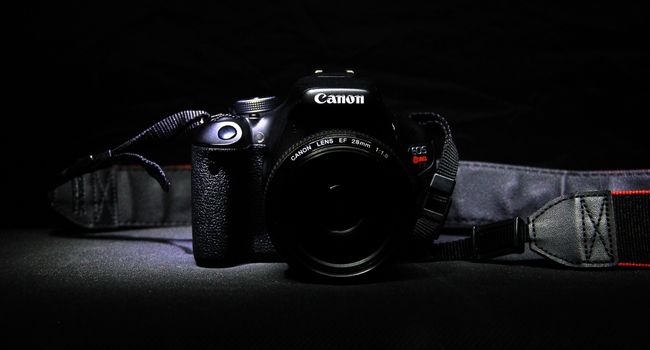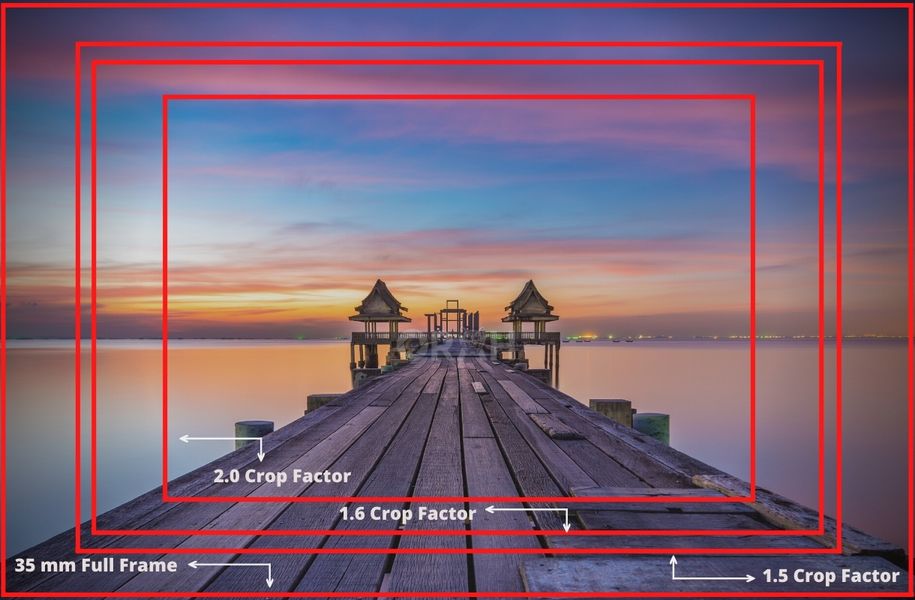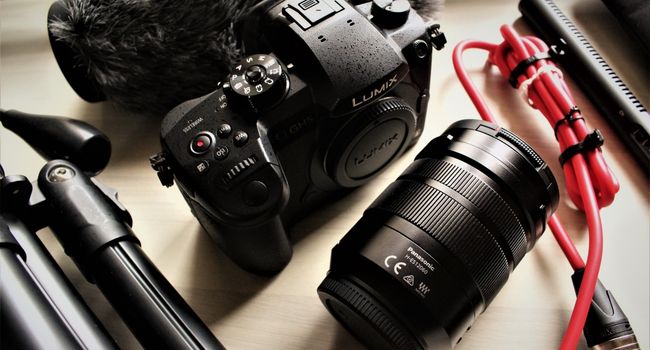
Good cameras are extremely important, whether you are trying to get started with photography as a hobbyist or you are looking at a professional stance, it is always better that you know what you should be investing in rather than buying something that is not going to serve you properly.
With that out of the way, since you are in the market looking at a good camera, it is safe to say that the debate around crop sensor vs full frame camera is one thing that may have managed to come your way a number of times. This is something that has happened to a lot of us.
What Is A Sensor?
Ideally, one does not need to go ahead and explain what a sensor is since information on photography is something that has been around for the longest time.
However, since most people want to know everything there is, it is better that we are paying attention to what sensors are and have more and more information and honestly, having the information is always better.

With that out of the way, an image sensor, a camera sensor, or an imager is a sensor that is responsible for detecting and conveying information that is used to make an image.
This is done by converting the variable attenuation of light waves into signals, small bursts of convert that are responsible for conveying the information. The waves can be either light or electromagnetic radiation.
The sensors we are talking about are available in a number of sizes that are ranging from medium format sensors, full-frame sensors, and crop sensors, and then there are sensors that are smaller and are designed for smartphones, as well as digital cameras.
What Is A Full Frame Sensor?
Of course, when you are talking about sensors, you simply cannot overlook the existence of full-frame sensors since they have been around for the longest time that you can imagine.
A full frame sensor is most commonly found in DSLR cameras as well as mirrorless cameras. This is a sensor with a 35mm image sensor.

The reason why this is such a popular and in-demand sensor is because historically, 35mm has been considered the standard film format, especially when you compare it with medium and large format sensors.
The 35mm sensor has absolutely no crop factor, which makes it extremely handy when it comes to using lenses with various focal lengths since the focal length of the lens is effectively the same due to the lack of a crop factor.
As you would expect, the full frame sensors are more expensive, but they are not the most expensive sensors in the market, so that is a good news.
What Is A Crop Sensor?
On the other hand, we have crop sensors that have taken the market by storm, and while they are nothing new, a lot of people actually invest in them because they are a lot cheaper and well, accessible to those who are not in the mood to spend a lot of money.

The crop sensors are basically cropped versions of 35mm sensors, and they usually come with a crop factor, which we will discuss. Normally, a crop sensor or APS-C sensor has the dimensions of 23.7mm x 15.6mm as opposed to 36mm x 24mm.
Any sensor that is called APS-C is a crop sensor, to begin with. That is the best way to determine the sensor size.
What Is Crop Factor?
A lot of times, people often overlook what the crop factor is or what it is supposed to do, and you would be happy to know that it is nothing complicated. A crop factor is essentially a multiplier that comes with crop sensors.

So, a normal crop sensor has a crop factor of 1.5x, which means that any lens that you are using has to have its focal length multiplied by 1.5x in order to get the effective focal length that it will work on.
Canon, on the other hand, has a crop factor of 1.6x. Which means if you are using a 50mm lens on a Canon APS-C camera, then you will multiply 1.6x with 50 to get the effective focal length.
Full frame lenses have a crop factor of just 1.0x, which means that the focal length remains unchanged.
Types Of Crops Sensors
Now, a lot of times, people forget that even crop sensor has a few types, and well, we are going to take a look at some of the most common below.
| Camera Name | Type Of Crop Sensor | Crop Factor |
|---|---|---|
| Canon (majority) | APS-C | 1.6x |
| Nikon | APS-C | 1.5x |
| Sony | APS-C | 1.5x |
| Panasonic | Micro-Four-Thirds | 2x |
| Olympus | Micro-Four-Thirds | 2x |
These are the most common crop sensors that are available in the market and are used by various people across the board.
The Advantages And Disadvantages Of Full Frame And Crop Sensors
Now that we are done talking about what full frame and crop sensors are, the next step is to start exploring the advantages and disadvantages of full frame and crop sensors. I am sure that this should not come as a surprise for anyone, but hey, we are here to guide you. So, let’s have a look.
We are going to start with the advantages of full-frame sensors.
- Excellent depth of field.
- Great low-light performance.
- A variety of lenses are available.
- Can easily perform at high ISO without increased digital noise.
- Widely acceptable format.
- As far as the downsides are concerned, you can look at them below.
- Expensive.
- The cameras are larger due to the sensor size being larger.
As far as the crop sensors are concerned, you can look at the advantages of those sensors below so you can have a better idea.
- Very affordable.
- Easy to use for beginners.
- Decent image quality.
- Smaller cameras.
Moving onto the disadvantages, you can look at them below.
- Low-light performance is not great.
- The crop factor can be annoying with most prime lenses.
- The depth of field is not as good.
Crop Sensor vs Full Frame: Field Of View And Focal Length
Now that we have most of the parts clear, we should also start discussing crop sensors vs full frame sensors in the light of field of view as well as focal length.
I used to think that this was never a big deal until I actually managed to look at the difference between a crop sensor and a full-frame sensor; I finally understood the difference, and let me tell you, it certainly is there.
Let’s start with the field of view; when you are using a crop sensor, the field of view that you are going to get access to is going to be a lot more restricted.
Why?
Well, because the focal length of the lens you are using is already cropped. So, in theory, if you are using a 35mm lens on a crop sensor, you are going to get an effective focal length of 52.5mm, which is not bad, but it certainly is a lot different from 35mm and gives you a comparatively tight or restricted field of view.
The same can be said when you are looking at the focal length. With crop sensors, you always get a cropped focal length which can be annoying, especially if you are using a telephoto lens, but with full-frame sensors, you never have to worry about that because it will allow you to get the actual focal length.
Crop Sensor vs Full Frame: Low Light Performance And Dynamic Range
Next up, we are pitting the two sensors against each other in terms of the low light performance dynamic range. I know it might not sound like these are important but as someone who has been taking pictures for years, having good low light performance and dynamic range is extremely important.
Starting with low-light performance, any photographer can tell you that it is a lot more important for them. So, how do these sensors perform?
Well, considering how a full-frame sensor has more surface area, it does offer better low-light performance because more light is hitting the sensor. Comparatively, the cropped sensor does not offer as good of a low-light performance.
Moving onto the dynamic range, you should know that dynamic range is the ratio between the darkest spot and the lightest spots in the image.
Full-frame sensors, thanks to their larger sensors, are able to deliver better stops of dynamic range as opposed to the cropped sensors.
Needless to say, if you are looking for a winner, getting yourself a full-frame camera is going to be a much, much better decision.
Crop Sensor vs Full Frame: Resolution And Image Quality
Moving on, we are going to shed light on the resolution and image quality of the sensors in question. It should not come as a surprise that these both factors are extremely important for anyone who is looking to get a camera. After all, if your images do not come out looking good enough, what even is the point, right?
Thankfully, as far as the resolution is concerned, both full frame sensors and cropped sensors are going to deliver the same resolution as long as the megapixel count is the same.
However, image quality is something that varies drastically across the board, and it is not because of the sensor size. It is more because of the other technologies that are used in these sensors, plus countless sensor choices across the board.
However, for the most part, a cropped sensor is not going to have the same image quality as a full-frame sensor. At the same time, a modern crop sensor camera might have a much better image quality than an older full frame sensor.
These are some things that you must keep in mind before going ahead and investing in a camera, and I would suggest doing thorough research before you spend your money.
Which Camera Sensor Is Right For You?
Since we are done with most of the article, we are going to start talking about the type of sensor that is best for you. To be honest, if you are just getting started with very little intention to take your photography to a professional level, I would suggest that you are spending money on a cropped sensor because you are not going to be taking a lot of photos professionally and as a hobbyist, a cropped sensor is a good option.

However, if you are thinking about investing in a camera for more than just a hobby and do plan on upgrading in the future, I would always suggest starting with a full-frame camera, especially if you have the means for it.
Wrap-Up:
The comparison between crop sensor and full frame sensor is something that has been around for as long as one can remember, and in all honesty, it is not something that should confuse most people.
If you are thinking about using either of them, just be sure that you are familiar with photography in general, as that should help you the most.
Frequently Asked Questions (FAQs)
#Q1- Do professional photographers use crop sensor?
Answer: Yes, there are a lot of professional photographers use crop sensor cameras simply because the cameras more than fulfill their requirements.
#Q2- Is full frame better than APS-C?
Answer: Yes, if you are looking at all the factors combined, then full frame cameras are actually better than APS-C cameras that are available in the market.
#Q3- Should I buy full frame lenses for a crop sensor?
Answer: No matter which lens you put on a crop sensor camera, it will always be cropped. So, you can go ahead and buy any lens you want.
#Q4- Why are crop sensors bad?
Answer: I would not call crop sensors bad, to be honest. The only issue here is that they have a number of problems that make those sensors not as good as full-frame sensors.
#Q5- Can you shoot weddings with a crop sensor?
Answer: Yes, as a matter of fact, I have seen a lot of people talk about how they prefer shooting weddings with crop sensor cameras.
#Q6- Do all professional photographers use full-frame cameras?
Answer: No, you will come across a lot of professional photographers who have been shooting professionally using a crop sensor camera
#Q7- Is a crop sensor better for wildlife?
Answer: If you want to go ahead and use a crop sensor camera for wildlife, you can more than do it with ease and without any issues.
#Q8- What happens when you put an APS-C lens on a full frame camera?
Answer: If you are using a lens that is specifically made for crop sensors on a full-frame camera, you will have to put the camera in APS-C mode, otherwise, there will be some vignetting.